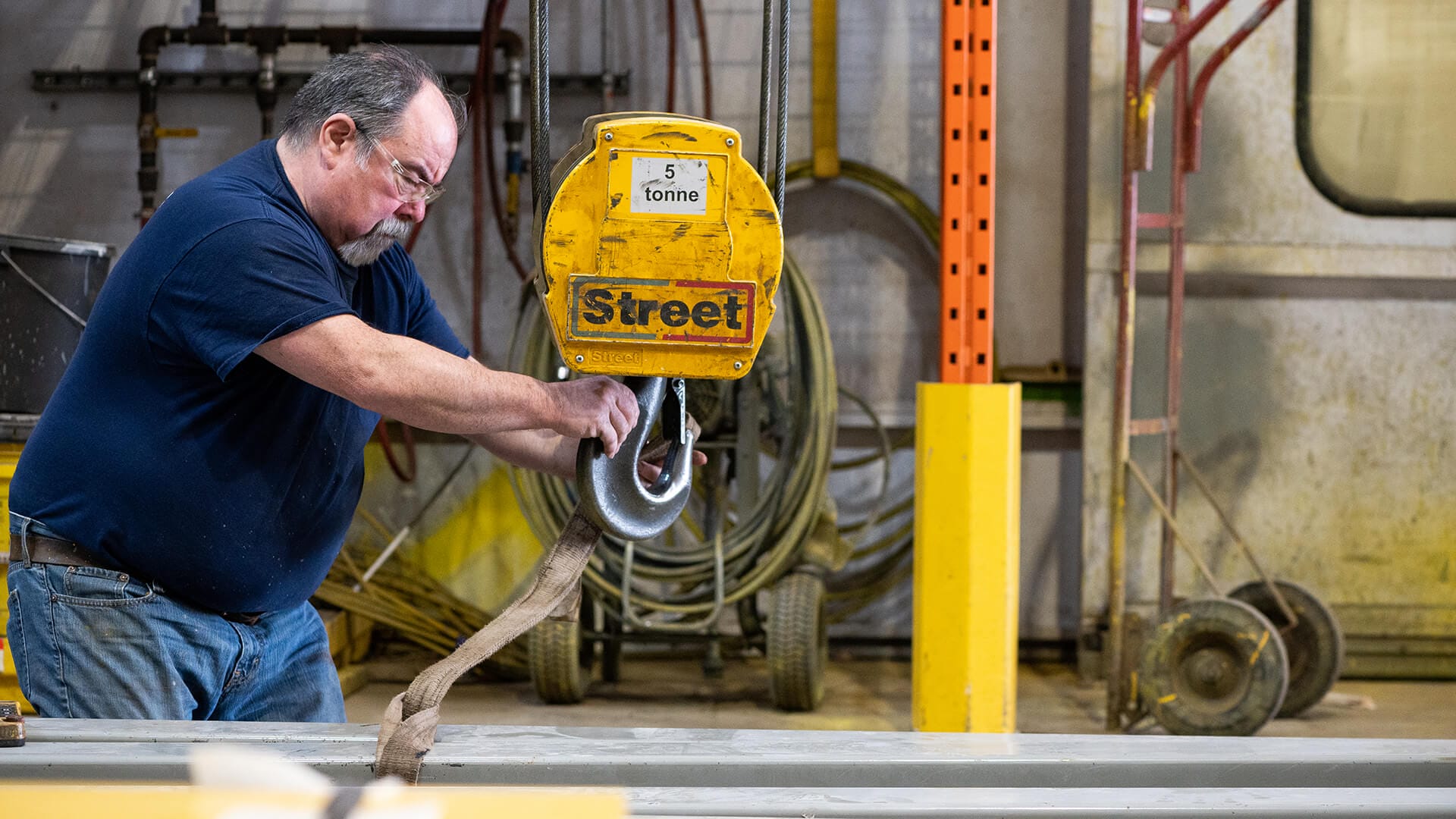
From proper installation and maintenance to using a fall arrest harness and safety system, there are many concepts to understand about safe crane operation.
Cranes are used widely at construction sites, in industrial and warehouse applications, ports and other transportation hubs. They keep our economy – and your business – thriving. When an accident happens on the job, it slows down production, and its effects can ripple through your workplace.
Accidents at work can be costly. While workplace fatalities in Canada are relatively low, workplace injuries are all too common. More than 250,000 workplace injuries were reported in 2022 alone, with costs to employers of about $117,000 to $234,000 per injury in direct and indirect costs, like insurance payouts, equipment replacement, administrative costs and more.
Safe crane operation is a complex topic, so while this isn’t necessarily everything you need to know, it’s a good starting point to make sure you are covering the basics.
Before You Move a Load
Before you even start to move a load, make sure all operators have the necessary crane operator training and certifications needed for safe crane operation.
- Examine the worksite – examine both the floor / ground conditions, and the area overhead for stability, obstructions, or other hazards.
- Inspect the crane – visually inspect the crane before use, including the cables and hooks. Do not operate if the crane structure, cables or hooks show signs of excessive wear.
- Lift a small load and verify that braking is functioning properly.
Before Moving a Load
Operating a crane day in and day out can become monotonous for the operator. If a crane operator doesn’t pay attention to every load, accidents can happen. Make sure you have processes and training in place to ensure that:
- The load does not exceed the maximum lift of the crane.
- Any loose material or parts on the load are removed or secured before lifting.
- There is no slack on the lifting cables
- Make sure there is no person or material in the lifting area that could be hit when lifting the load.
- Ensure the operator is using proper protective equipment, including a fall arrest harness (if needed).
When Moving a Load with Your Overhead Crane
- Lift and move loads smoothly, avoiding abrupt, jerky movements.
- Avoid raising loads higher than necessary.
- Watch as the load moves through the production area (including crane runways) and ensure people and materials do not interfere with load movement.
- Avoid moving the load over other workers.
- Do not leave suspended loads unattended.
- Lower the load carefully, ensuring that braking systems are working.
- Watch for anything that can catch on the load during lifting, lowering, and transit.
When You’re Finished with the Overhead Crane Equipment
- Ensure the crane hooks are clear – never leave a load on a crane.
- Return the crane to the designated starting position and raise all hooks to a mid-position.
- Ensure the crane is properly powered down.
Regular Crane Maintenance is Critical
In addition to proper day-to-day use, keeping up with required crane inspections and maintenance can make the difference between safe operation and an accident. Regular overhead crane maintenance can not only save you from an accident, it can ensure continued crane efficiency, and help prolong the life of your equipment.
Fall Prevention and Using a Fall Arrest Harness
During the course of work, crane operators, maintenance workers, and other on-site workers might find themselves working at heights. In these instances, proper use of a fall arrest system or fall restraint system with a fall arrest harness could be critical to prevent falls resulting in injury or death.
A typical fall arrest harness (also called a fall restraint harness, safety harness, or fall protection harness) has straps that go over the user’s shoulders, around the torso, and around the thighs. When working at heights, the harness is attached to a secure anchor point.
Should a worker fall, the harness, cable and anchor point function together to stop them from hitting the ground, while the straps work to distribute the force of the fall throughout the body, reducing the overall impact.
Before working on heights, workers should:
- Examine the fall arrest harness straps for wear – damaged or worn-out harnesses should be replaced immediately.
- Ensure they wear the fall arrest harness correctly, and that it fits properly.
- Test the anchor point to ensure it is secure.
Choose O’Brien Lifting Solutions for Safe Crane Design, Expert Crane Maintenance and Professional Crane Operator Training
With over 60 years in the business, O’Brien Lifting Solutions has the equipment, personnel, and expertise you need to design and maintain a safe operating environment for your lifting solutions. Whether you are looking for training, crane upgrades, or 24/7 crane service, when you choose O’Brien, you are choosing the crane experts. Call us at 1-866-953-0643 or contact us online.
Follow O’Brien Lifting Solutions on Facebook.
References:
Occupational Safety Group: Understanding the ROI of Health and Safety
University of Regina: 2022 Report on Work Fatality and Injury Rates in Canada
Canadian Centre for Occupational Health & Safety: Materials Handling – Overhead Crane Operation
